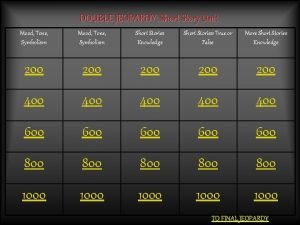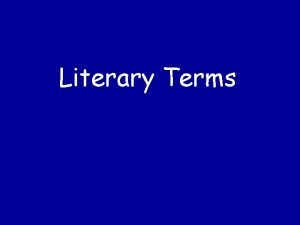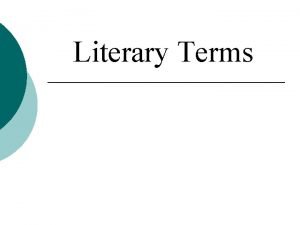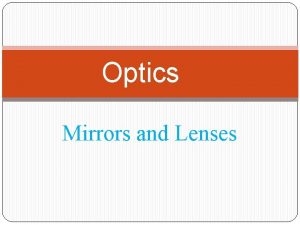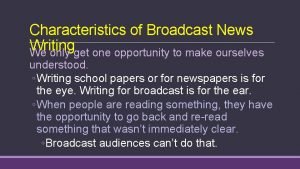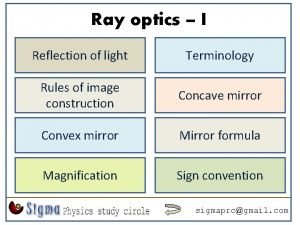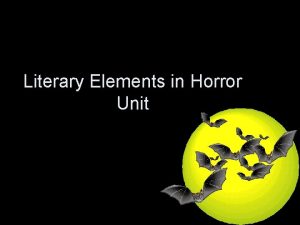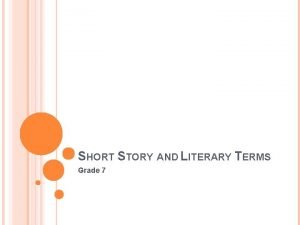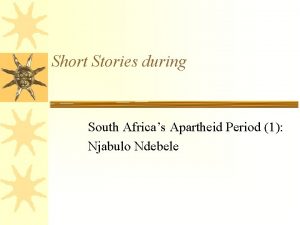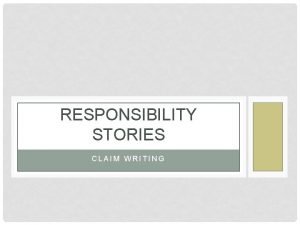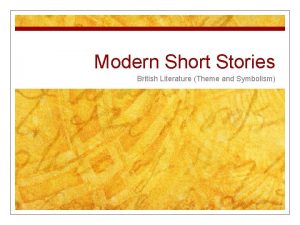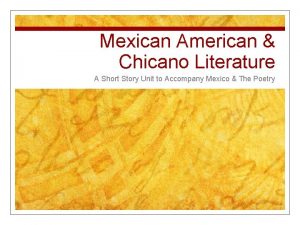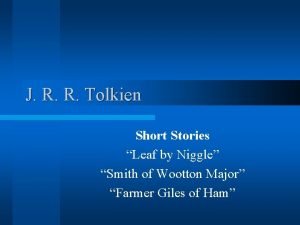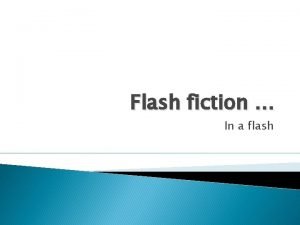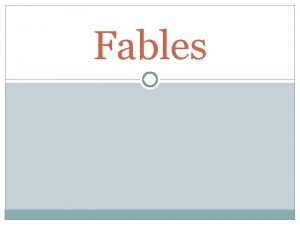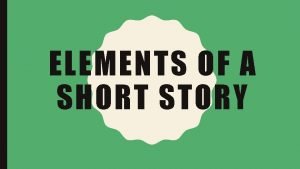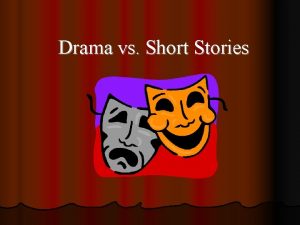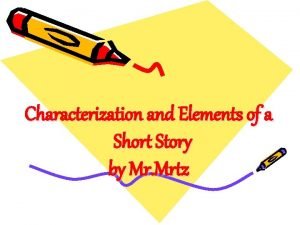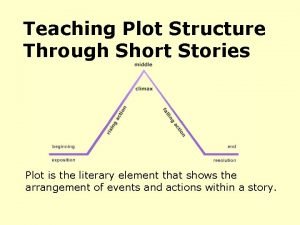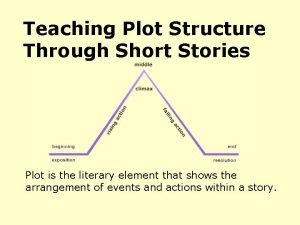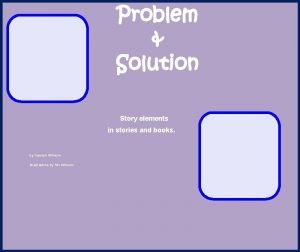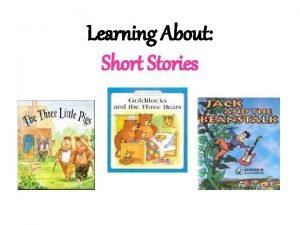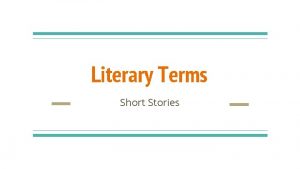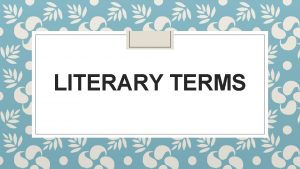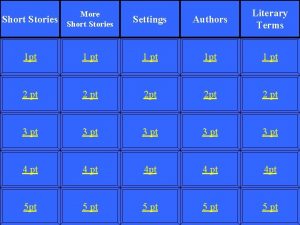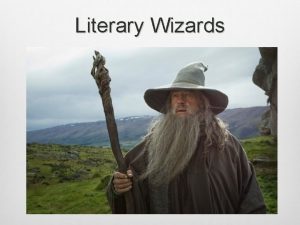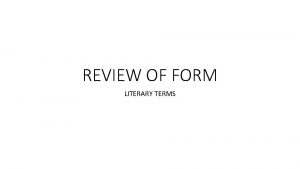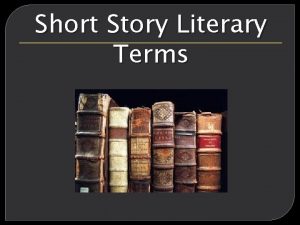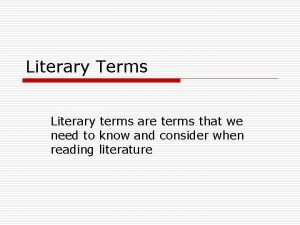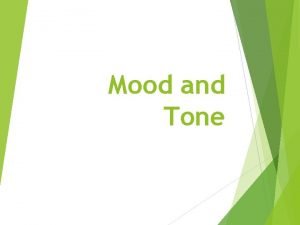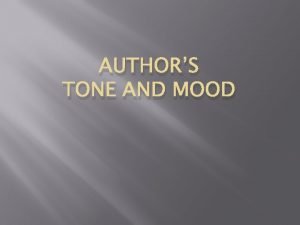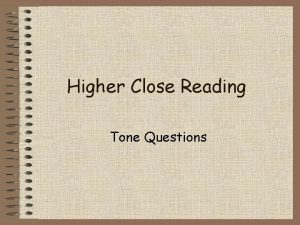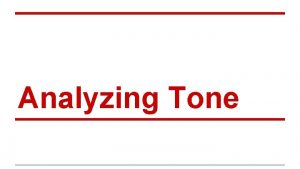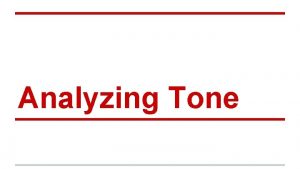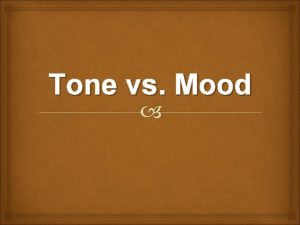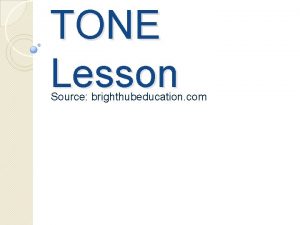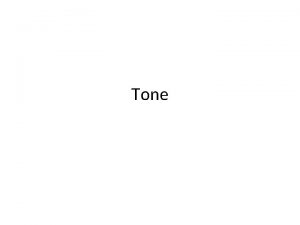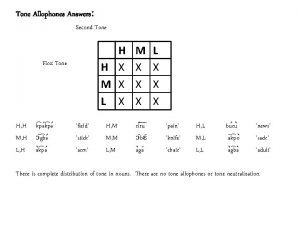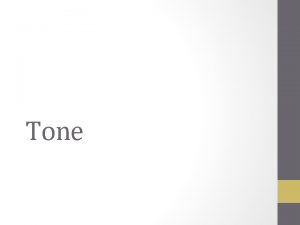Literary Terms Short Stories Tone a reflection of


























- Slides: 26

Literary Terms Short Stories

Tone a reflection of a writer’s or speaker’s attitude toward a subject of a poem, story, or other literary work. Tone may be communicated through words and details that express particular emotions and that evoke an emotional response from the reader. That emotional response created in the reader by the text is called MOOD

Examples respect, “The consecrated Statue of Liberty stood proudly in the storm’s path unafraid of the wind” anger, “The horrible cur showcased his wrath toward me in the most vile way. ” lightheartedness, “The whispers of childhood danced on my heart in an easy pattern”.

Characterization is the process by which the writer reveals the personality of a character. Two Types: Direct Characterization and Indirect Characterization.

Direct Characterization Tells the reader what the personality of the character is. “The patient boy and quiet girl were both well mannered and did not disobey their mother. ”

Indirect Characterization Reveals things to the reader that shows the personality of the character. “I yawned, trying to keep my eyes open in the lecture. I reached for my coffee cup and was disappointed to realize it was empty. ”

Static Characters Do not change or grow in the story, they remain the same.

Dynamic Characters A major change in their personality, values, etc. Can be positive or negative. These changes contribute to the meaning of the story.

Conflicts is a struggle between two opposing forces. Character vs Self Character vs Others Character vs Environment Character vs Technology Character vs. Nature

Plot A sequence of events that come together to make up the story.

Suspense The intense feeling that the reader goes through while waiting for the outcome of certain events.

Exposition Setting the scene. The author introduces the characters, setting, and background information.

Rising Action The story builds and starts to get more exciting. Main characters usually go through more conflicts in the rising action. They work to overcome their problems and resolve the conflict.

Resolution The conflict of the main character or characters is solved. This can be solved by themselves or somebody could solve it for them.

Climax The high point of the story. The climax has the most interest and suspense for the reader. The rising action builds up to the climax.

Falling Action Events that happen as a result of the climax. Usually points towards the end of the story and the resolution.

Imagery Language used by the writer to appeal to our physical senses. Five Senses: Touch, Sight, Smell, Sound, Taste.

Allusions Allusion is a brief and indirect reference to a person, place, thing or idea of religious, historical, cultural, literary, mythological, or political significance.

Theme is the central message, concern or purpose of a story. Could be stated directly by the author, but usually stated indirectly. When stated indirectly, the reader must figure out theme by looking carefully at what the story reveals.

Symbolism When a person or object stands for something else in a story.

Point of View First Person: Uses the words “I”, “We”, and “Us”. The story is narrated by one character. Third Person: The story is centered around this character, their thoughts and actions. Omniscient: Narrarotor that has knowledge of all times, people places and events.

Irony A contrast between expectation and reality. Dramatic Irony-Irony that is inherent in speeches or a situation of a drama. Understood by the reader and not the characters in the story. Situational Irony: irony involving a situation in which actions have an effect that is opposite from what was intended. The outcome is contrary to what was expected. Verbal Irony: irony in which a person says or writes one thing and means another. Uses words to convey a meaning that is opposite from the actual meaning.

Setting The time and place where the story is set.

Flashback and Foreshadowing Flashback- When an earlier event, conversation or episode is inserted into the sequence of the story. Other flashbacks could be the memory of a character in the story. Foreshadowing: The author uses clues to hint at what might happen later in the story. Prepares the reader for what is to come.

Protagonist and Antagonist Protagonist: The main character of the story. Antagonist: The person who opposes the main character of the story.

Figurative Language Simile: Comparing two unlike things using like or as. “Cool as the other side of the pillow. ” Metaphor: Comparing two unlike things. (No like or as). “Life is a crazy journey. ” Personification: Giving human qualities to nonhuman things. “The sea was roaring with anger. ”
 Short short short long long long short short short
Short short short long long long short short short Jeopardy tone
Jeopardy tone A speaker who uses vivid imagery
A speaker who uses vivid imagery Short story in literary terms
Short story in literary terms Plano convex lens
Plano convex lens Characteristics of broadcasting
Characteristics of broadcasting Terms used in reflection of light
Terms used in reflection of light Literary devices in horror stories
Literary devices in horror stories Definition of short story
Definition of short story Elements of a short story grade 7
Elements of a short story grade 7 The prophetess by njabulo ndebele analysis
The prophetess by njabulo ndebele analysis A story about responsibility
A story about responsibility A shocking accident theme
A shocking accident theme Chicano literature short stories
Chicano literature short stories Short stories with main idea
Short stories with main idea Tolkien short stories
Tolkien short stories Barney will stanton
Barney will stanton Shortest short story
Shortest short story Fable short stories
Fable short stories What type of story element concludes a story
What type of story element concludes a story Difference between short story and drama
Difference between short story and drama Indirect characterization words
Indirect characterization words Short stories definition
Short stories definition Plot structure short story
Plot structure short story How to teach plot structure
How to teach plot structure Problem and solution short stories
Problem and solution short stories Essential questions for short stories
Essential questions for short stories

